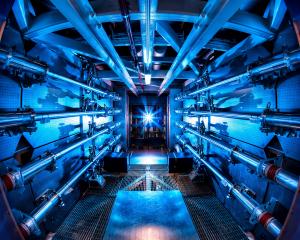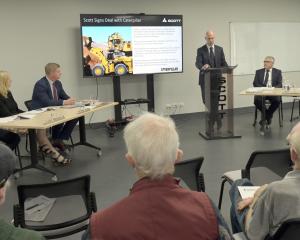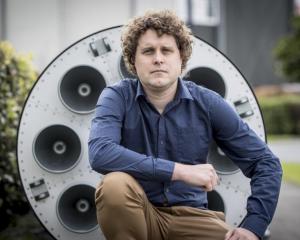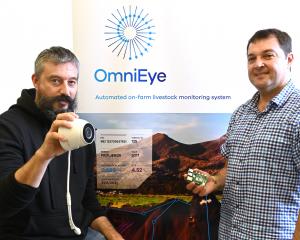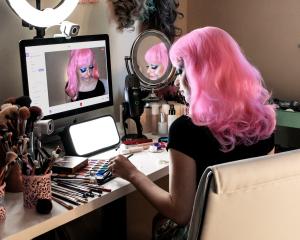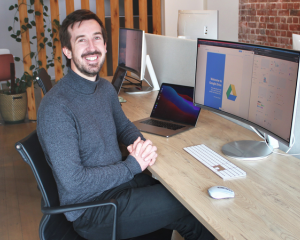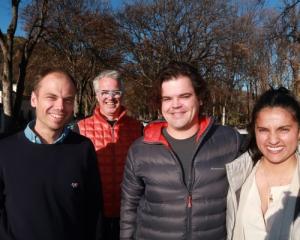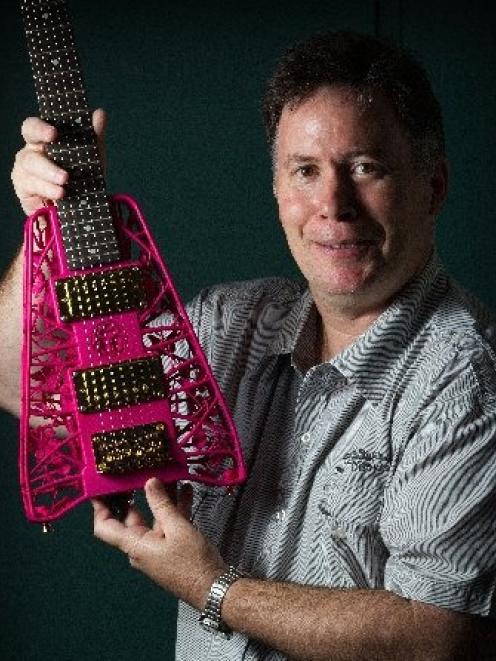
With a 3-D scanner and printer and a bit of practice, enthusiasts can produce custom-made jewellery or make a replacement part for a broken dishwasher in their own garage workshop.
It's been called the poor man's teleporter, based on the fictional Star Trek invention that beamed humans on to hostile planets and reassembled them, molecule by molecule.
From a spanner to a full-sized house, 3-D printing is building complex objects to a standard that would have been regarded as impossible only a few years ago.
With a 3-D scanner and printer and a bit of practice, enthusiasts can produce custom-made jewellery or make a replacement part for a broken dishwasher in their own garage workshop.
Companies can test dozens of models for new products in a fraction of the time and cost it used to take.
And as Customs Minister Maurice Williamson reminded the nation recently, criminals could pass digital files across national borders to make their own guns and drugs undetected.
Anyone could print off a pistol and ''pop over to your neighbour's and shoot him'', he told Radio New Zealand. You could then put the pistol through a shredder, turning it back into powder form and police would never be able to trace the weapon.
Not quite, says Olaf Diegel, a professor of mechatronics (a field that combines various types of engineering) at Massey University.
Diegel - who specialises in 3-D printing and makes his own electric guitars - says most criminals would need a prohibitively expensive 3-D printer to produce a working gun, so it would be far cheaper for most to buy or make a gun the old-fashioned way.
It's also not possible to reduce a gun to the powder it was created from, despite a plotline based on this idea in the new series of Sherlock Holmes show Elementary, which screened in America last year and in New Zealand a few weeks ago.
He thinks it's unfortunate that the worst possible uses of 3-D printing have put the technology back in the headlines - Williamson gave a similar warning in April last year - when the process has enormous potential for good.
The first step is a 3-D scan of the original object, which creates a digital file.
The file is sent to a 3-D printer, which prints many layers of liquid or powder, usually a fraction of a millimetre thick, which solidify and build up the replica object.
The process is well-established for plastic and metal and is now expanding to other materials, including food.
At the most basic level, it allows designers to test their ideas by building prototypes quickly and cheaply.
Fisher & Paykel Healthcare, which makes cutting-edge respiratory products for American hospitals, uses 3-D printers to allow it to trial 10 ideas a week instead of one.
Product development manager Peter Graham said a prototype that used to cost $20,000 and take two months now cost less than $100 and could be made overnight.
The process has benefits for geographically isolated countries such as New Zealand because it allows us to show off our ideas anywhere in the world.
To some extent, 3-D printing will slow the trend of rich nations outsourcing work to poor nations where workers are paid less, says Diegel.
''In the next 10 to 15 years the high-value products will come back to those countries. In fact, they'll be manufactured at the sales point.
Instead of shipping products around the world, my American hearing aid will be printed here in New Zealand to save shipping costs.''
He thinks the most exciting aspect of the new technology is the way it allows anyone with a good idea to compete with established industry, just as the internet removed entry barriers in music, video and the media.
''Currently, if you have an idea for a product, you go to an engineering company and they say it's going to cost you $10,000 or $100,000 just to try your idea out.
''Often that's the end of your idea. This way, in your backyard, you can make a product - not just a prototype - to sell to the general public.''
He knows this from personal experience in his 3-D-printed custom-made guitar business. A new model that would have cost him up to $10,000 to develop with conventional methods now costs less than $1000.
''So it's pocket money to test out the new idea.''
What you can (and can't) make
Tools and parts
Status: Well-established
A popular YouTube video clip, taken from National Geographic's Known Universe programme, shows how to make a fully functional spanner from a 3-D printer. Many thought it a hoax but the technology is well proven. Nasa will send a 3-D printer to the International Space Station this year so astronauts can make their own spare parts. It has also tested a rocket engine with a 3-D-printed fuel injector that uses two parts instead of 115. The process works best for complicated or expensive tasks at low numbers, so it won't replace mass manufacturing, but can be combined with it for better results.
Art and jewellery
Status: Well-established
Each piece of jewellery can be made slightly different for individual buyers, a process known as ''mass customisation''. Until recently, resolution has been poor but quality is rising and prices are dropping. Shapeways, which bills itself as the world's largest 3-D printing marketplace, offers thousands of pieces for under $100. Last year the Van Gogh museum in Amsterdam used 3-D printing to make replicas of old masters so accurate they would fool anyone but an expert. The copies (with an unbreakable seal to prevent forgery) sold for about 22,000 ($44,000).
Mobile phones
Status: Early days
Massey University 3-D expert Prof Olaf Diegel says we're not yet at the point of 3-D printing a mobile phone with a built-in circuit board and battery, but it's getting close. The technology involves conductive plastics, which enable the printing of electronics as part of the product. ''You'd have a mixed-material printer where one head would print the plastic component, the next head at the same time would be printing a conductive plastic for the circuits and another one might be printing the silicon to make the chips. What would come out would be a fully working mobile phone,'' he says. One of the world leaders in this area is US-based Optomec, which sprays on liquid electronic materials in a dense aerosol.
Cars
Status: Early days
Auckland man Ivan Sentch built a replica Aston Martin on a $500 printer in his garage last year. The makers of the James Bond movie Skyfall did the same, printing three copies a third the size of the original car for use in stunts and explosions. Some car companies, such as Honda, are offering enthusiasts full plans to their old models on their website. But no one is seriously suggesting a model you can drive yet, except Canadian Jim Kor, whose three-wheeler Urbee car is made from plastic and stainless steel. It's electric but uses petrol at higher speeds. Kor thinks it could be mass-produced for $US16,000 ($NZ19,000) each.
Houses
Status: Early days
Prof Behrokh Khoshnevis of the University of Southern California has built a giant 3-D printer robot, which he says can make a 2500sq ft (232sq m) concrete house in less than 24 hours. The robot travels along two parallel tracks, putting down multiple layers of concrete to build up the house. Khoshnevis, who presented his idea in January as a solution to the world's housing problem, says the walls can be hollow and his printer can also do the electrical work, plumbing, tiling, finishing work and painting. Sceptics say the concrete would need reinforcing but Khoshnevis claims it is stronger than traditional housing walls.
Food
Status: Early days
Nasa astronauts can look forward to 3-D printed pizza in space, made from dehydrated ingredients that last for 30 years. More appealing is the star turn at January's Consumer Electronics Show in Las Vegas, a series of origami-like sugar sculptures produced by the ChefJet Pro, the first commercial, kitchen-ready food printer. The printer, which looks like an oven, deposits sugar layer by layer in a tray, then melts the parts intended for the sculpture with water so they solidify. Ink can be selectively added to the water so the sculptures come out in full colour. The machine - which is likely to cost about $US100,000 ($NZ120,000) - can also print in chocolate.
Guns
Status: Early days
It's already possible. The first 3-D printed gun, called the Liberator, was produced in the US in May last year, followed by the first 3-D printed metal gun in November. British police seized a 3-D printer in October, which they believed an organised crime gang was planning to use to make a gun. But Diegel says it remains highly unlikely that most criminals will turn to 3-D printers, as it requires a large industrial machine costing hundreds of thousands of dollars to make a reliable weapon. With a typical desktop printer costing less than $5000, ''you could make a gun but it would probably blow up in your hands. You could go to a plumbing store and buy a $2 bit of pipe ... and it would be 100 times safer''.
Drugs
Status: Not yet
Glasgow chemistry professor Lee Cronin unintentionally kicked off this debate in 2012 by announcing he had prototyped a 3-D printer that could assemble chemical compounds at a molecular level. ''What Apple did for music,'' he said, ''I'd like to do for the discovery and distribution of prescription drugs.'' As several commentators pointed out, the biggest users of this breakthrough could be illegal drug syndicates. There's no evidence yet that Cronin's idea is achievable.

